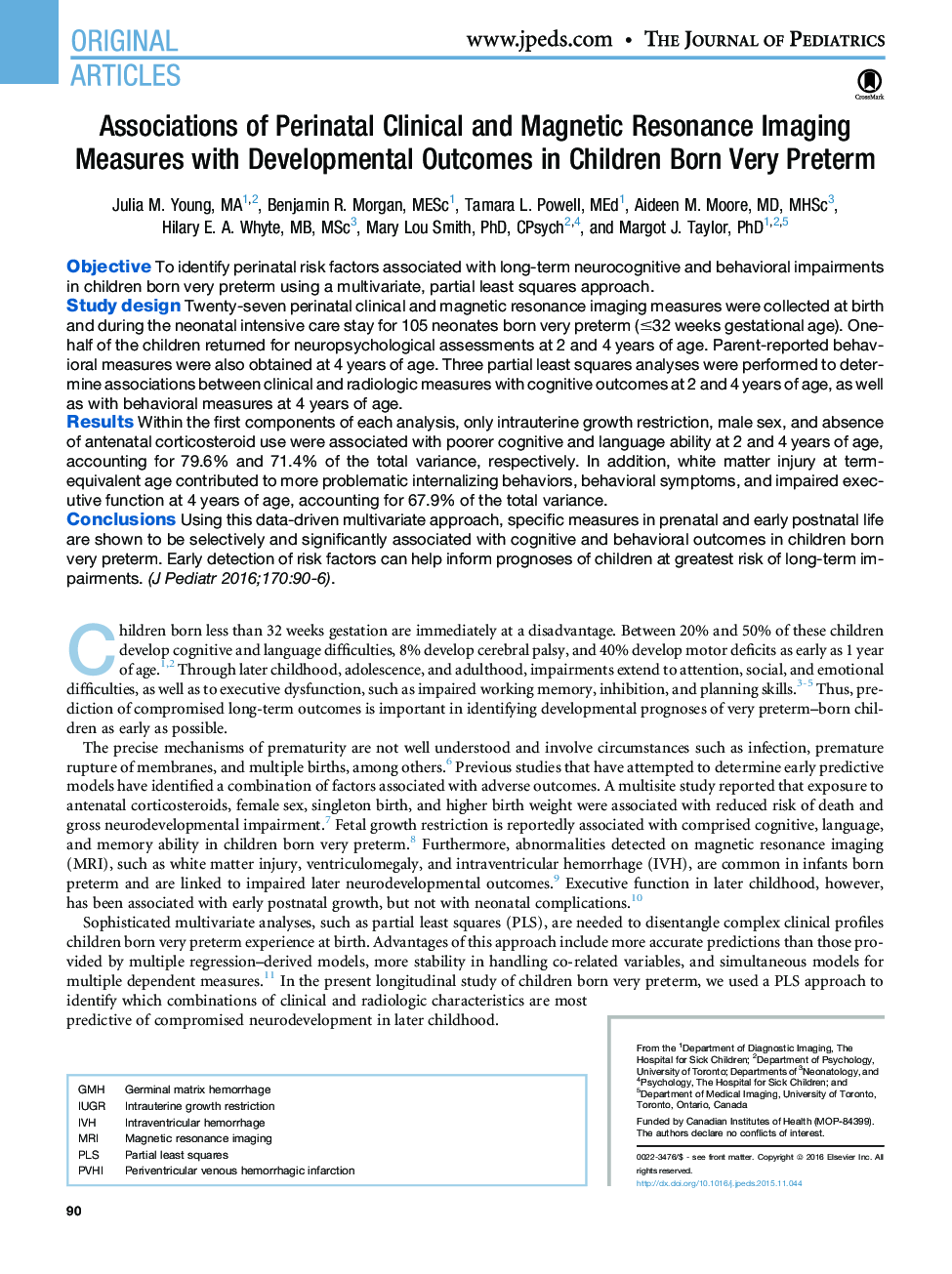| Article ID | Journal | Published Year | Pages | File Type |
|---|---|---|---|---|
| 6219073 | The Journal of Pediatrics | 2016 | 7 Pages |
ObjectiveTo identify perinatal risk factors associated with long-term neurocognitive and behavioral impairments in children born very preterm using a multivariate, partial least squares approach.Study designTwenty-seven perinatal clinical and magnetic resonance imaging measures were collected at birth and during the neonatal intensive care stay for 105 neonates born very preterm (â¤32 weeks gestational age). One-half of the children returned for neuropsychological assessments at 2 and 4 years of age. Parent-reported behavioral measures were also obtained at 4 years of age. Three partial least squares analyses were performed to determine associations between clinical and radiologic measures with cognitive outcomes at 2 and 4 years of age, as well as with behavioral measures at 4 years of age.ResultsWithin the first components of each analysis, only intrauterine growth restriction, male sex, and absence of antenatal corticosteroid use were associated with poorer cognitive and language ability at 2 and 4 years of age, accounting for 79.6% and 71.4% of the total variance, respectively. In addition, white matter injury at term-equivalent age contributed to more problematic internalizing behaviors, behavioral symptoms, and impaired executive function at 4 years of age, accounting for 67.9% of the total variance.ConclusionsUsing this data-driven multivariate approach, specific measures in prenatal and early postnatal life are shown to be selectively and significantly associated with cognitive and behavioral outcomes in children born very preterm. Early detection of risk factors can help inform prognoses of children at greatest risk of long-term impairments.
